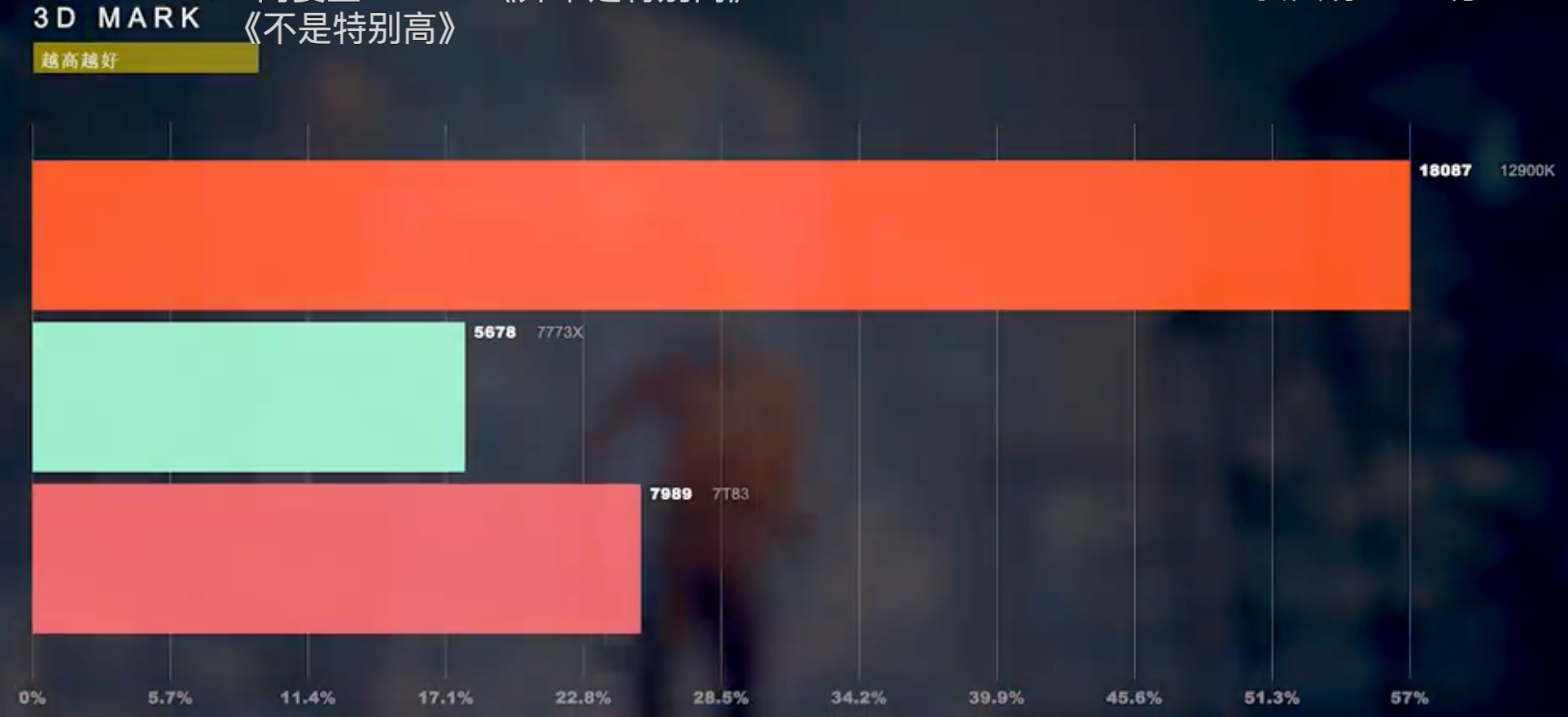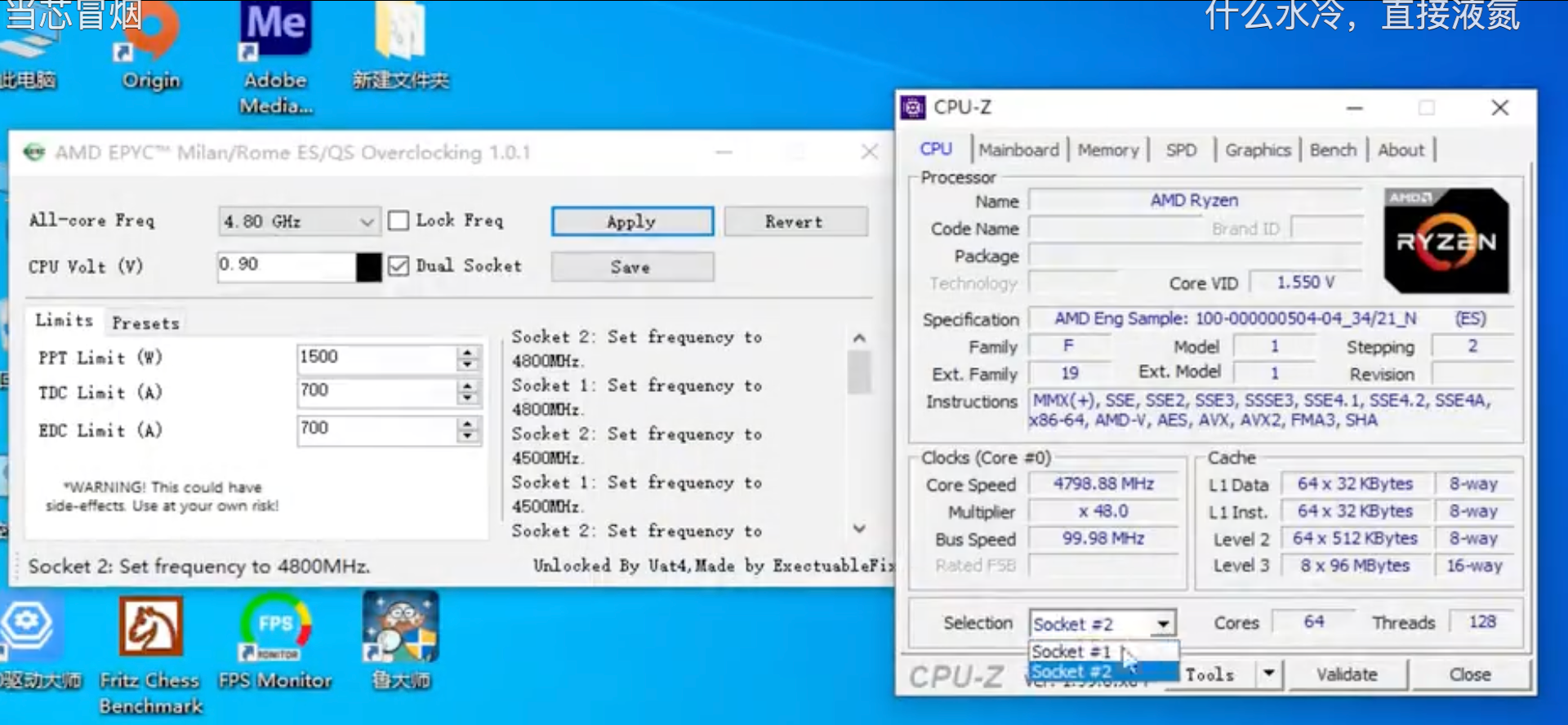AMD's EPYC 'Milan-X' Overclocked: 128 Cores with 1.6GB Cache at 4.8 GHz
Engineering sample of AMD's EPYC leaks, gets benchmarked
A Chinese videoblogger has managed to obtain two of AMD's yet-to-be-released 64-core EPYC 7773X 'Milan-X' processors with 804MB of cache (per CPU). Not only did they benchmark them, but they overclocked them to a rather unprecedented 4.80 GHz frequency.
AMD has started shipments of its EPYC 'Milan-X' processors with 3D V-Cache to select partners, but high-volume availability of these CPUs is months away. Nonetheless, as AMD is preparing to formally launch its new products, the company is sending out samples to dozens of its partners, which is why samples of those CPUs inevitably leak and end up at the hands of journalists or bloggers.
This is what happened to engineering samples of AMD's EPYC 7773X processor that were acquired by Chinese video blogger Kenaide (via @momomo_us) and put through a number of tests. The sample of the EPYC 7773X CPU is a 64-core processor clocked at a 2.10 GHz base frequency as well as a 3.40 GHz boost clock-rate (which is lower when compared to the 2.20 GHz–3.50 GHz clocks for the commercial product), but the main feature of the Milan-X is obviously their 512MB of 3D V-Cache onboard. In total, 64-core Milan-X CPUs will have 804MB of cache: 32MB L2, 256MB L3, and 512MB 3D V-Cache.



With such a massive cache, it's pretty obvious that the CPU is designed to offer maximized performance in memory-heavy applications, which is why it's not particularly surprising that a system with 128 cores in total did not really demonstrate record-breaking performance in benchmarks like Cinebench. Meanwhile, engineering samples tend to be capped in terms of performance due to competitive reasons, so this could be another reason why the system did not impress in some applications.
But running content creation benchmarks was not the only thing that Kenaide tried to do with the upcoming server. In addition, he tried to overclock the CPUs. Since server platforms are naturally not designed for overclocking, in a bid to boost the frequency of AMD's EPYC 7773X processors to 4.80 GHz (boost) the specialist had to use a custom motherboard designed for hyperscale datacenters and featuring an enhanced voltage regulation module. With the AMD EPYC Overclocking utility, they increased power limits to 1500W (up from 280W by default), and boosted voltage all the way to 1.55V. Interestingly, but the CPUs were cooled down using air coolers, albeit working at high speeds and therefore producing loads of noise.
The overclocking potential of the engineering sample of AMD's EPYC 7773X 'Milan-X' is arguably as impressive as the size of 3D V-Cache. Yet it remains to be seen whether AMD will actually take advantage of this potential for CPUs aimed at supercomputers and other applications that normally aren't pushed to extreme clocks. Still, if a company wants fast chips and doesn't care as much about power consumption, maybe we'll see special edition EPYC chips.
Get Tom's Hardware's best news and in-depth reviews, straight to your inbox.

Anton Shilov is a contributing writer at Tom’s Hardware. Over the past couple of decades, he has covered everything from CPUs and GPUs to supercomputers and from modern process technologies and latest fab tools to high-tech industry trends.
-
drajitsh wonderful. Do you think that you can publish the details of the overclock. It does not make sense to only boost the CPU from 280 to 1500 and leave the memory alone.Reply
Anyway, a milan -X based threadripper pro with a updated asus WS pro sage would be really EPYC,:love:
